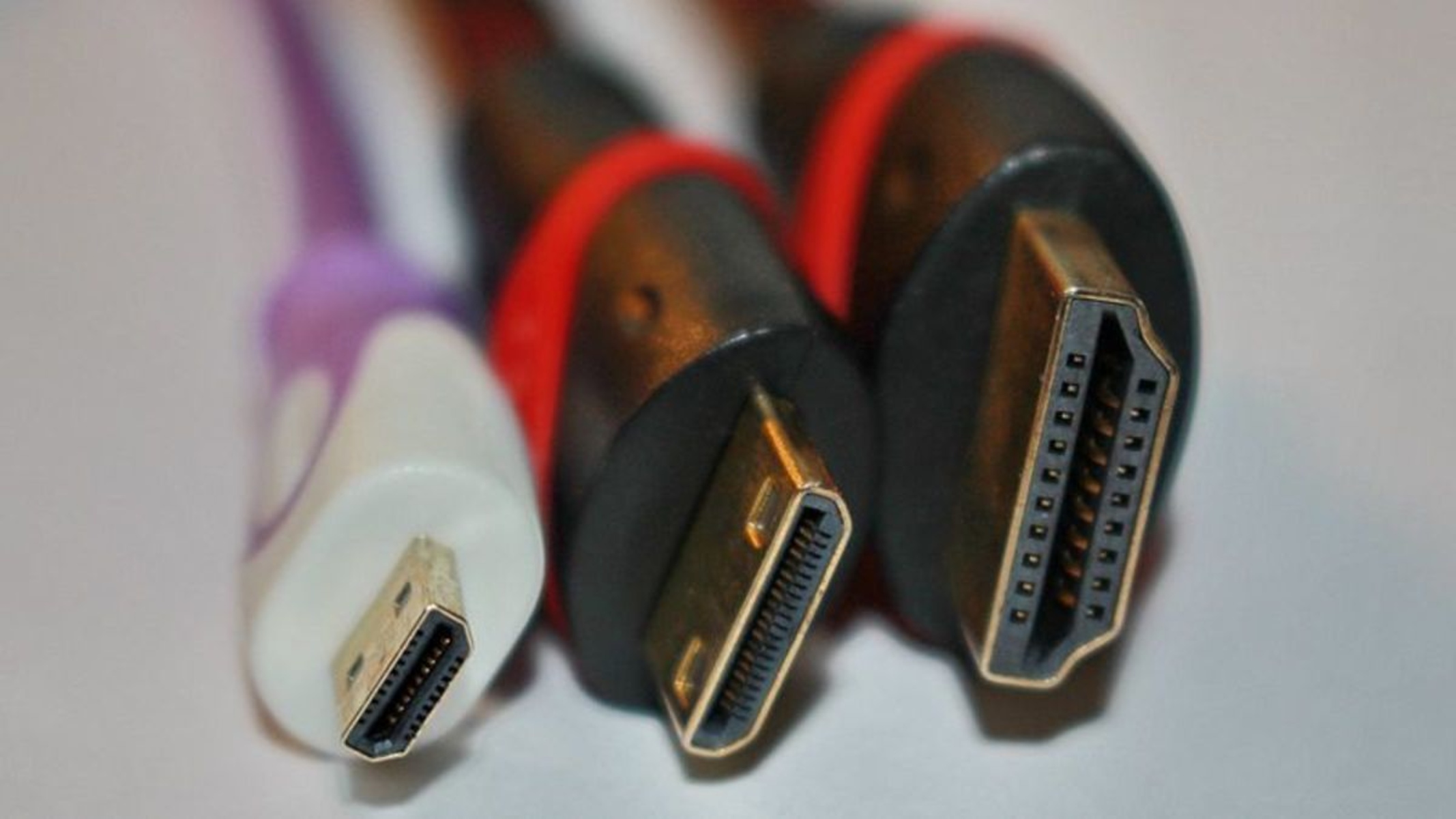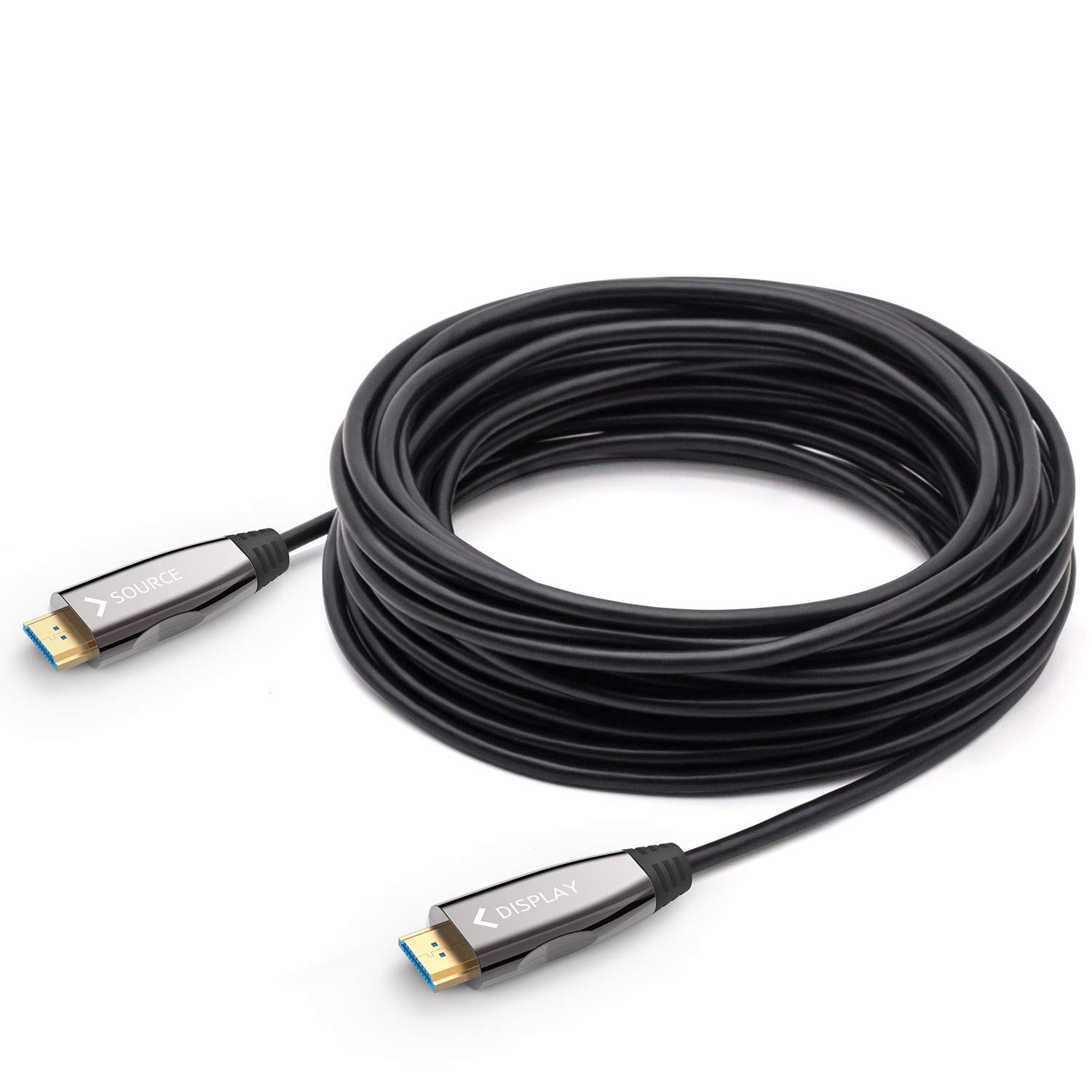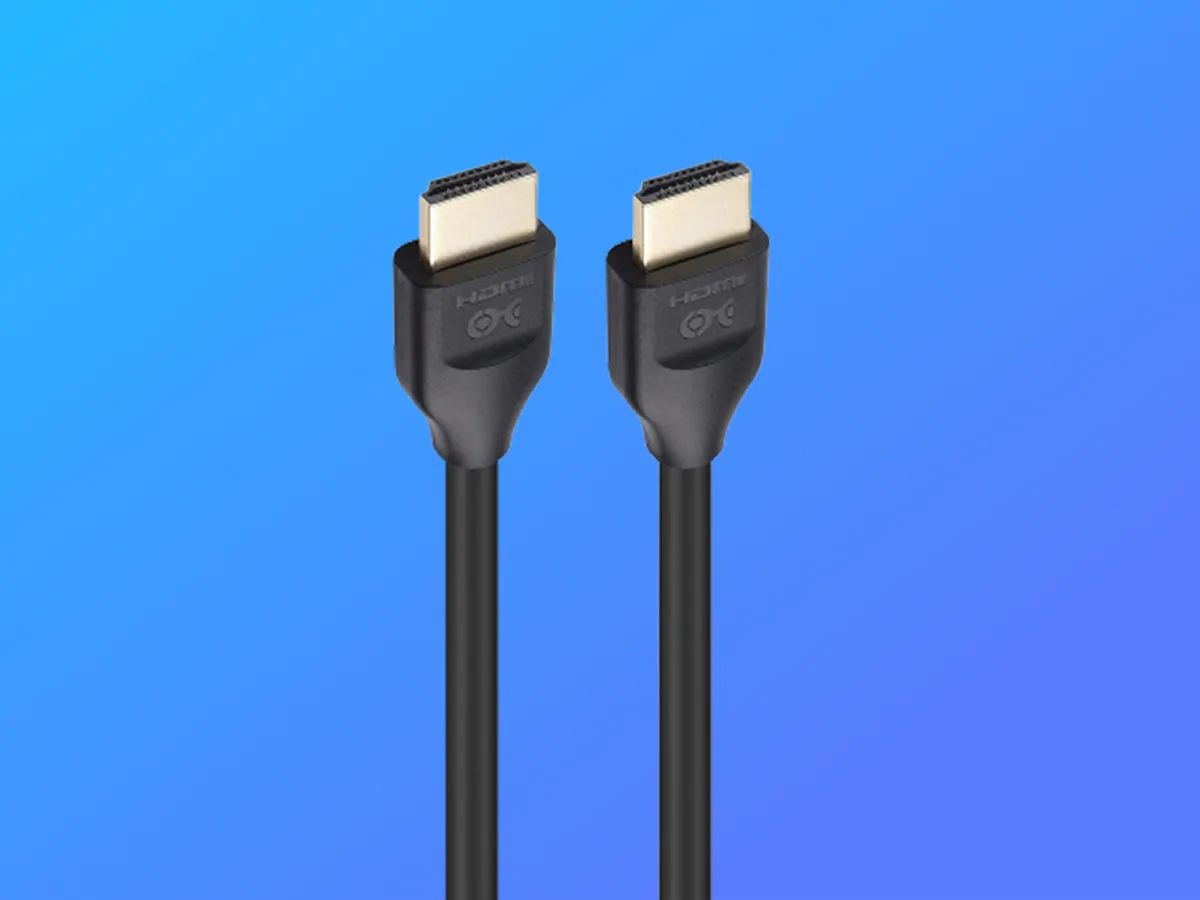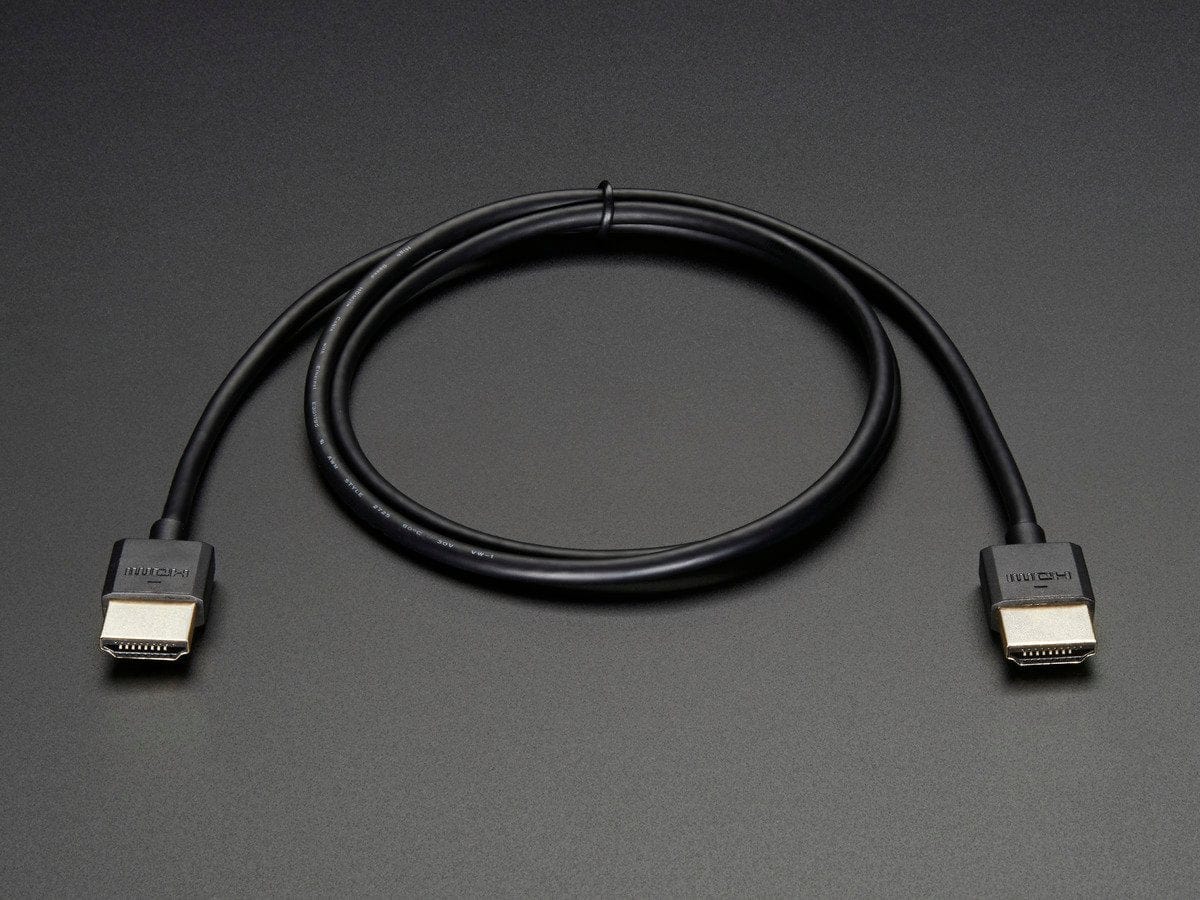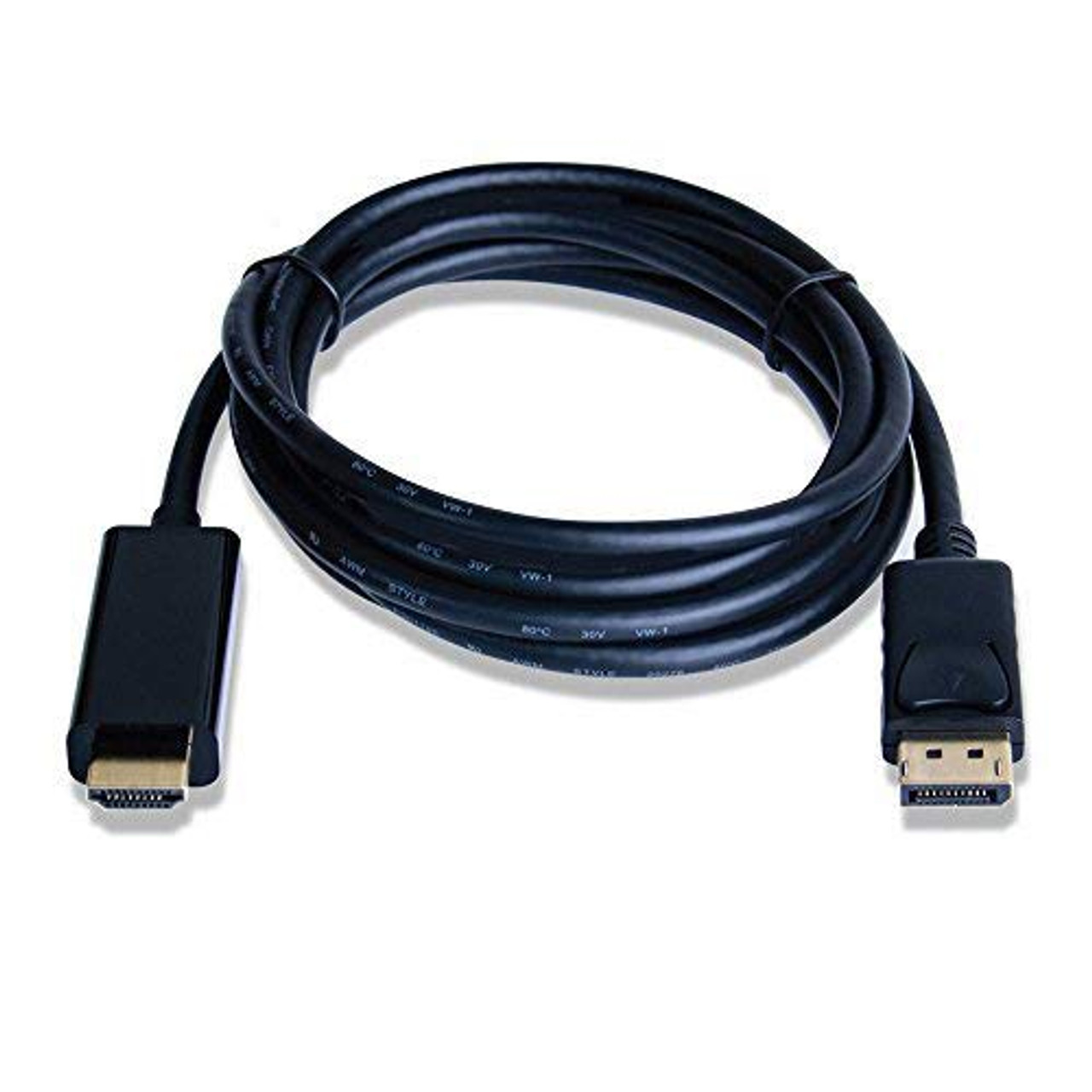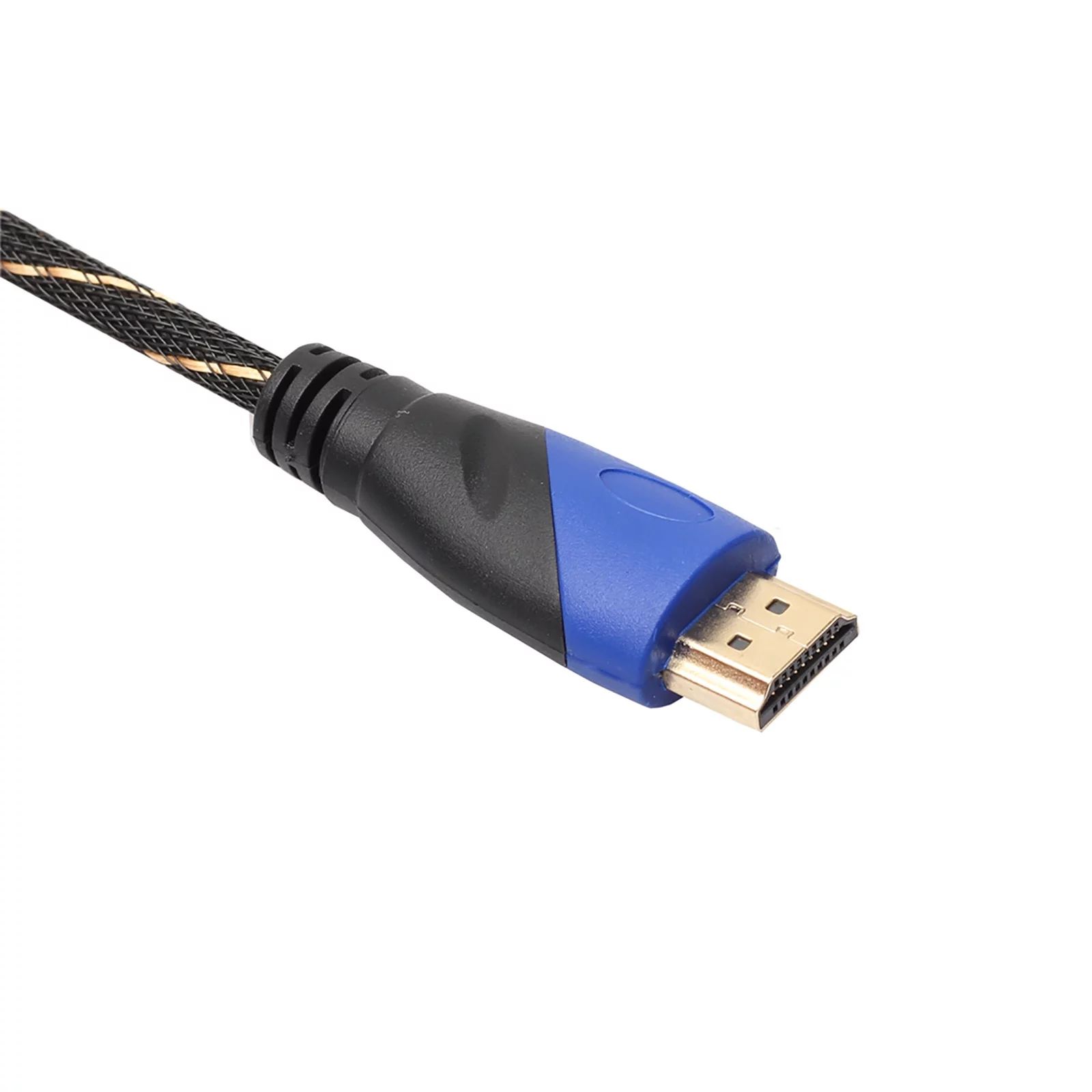Introduction
Welcome to the world of high-definition multimedia! As technology continues to evolve, the demand for ever-improving audio and video quality has grown exponentially. With the advent of 4K resolution, a new standard in display resolution, HDMI cables have become an essential component for transferring high-quality audio and video signals between devices.
But what exactly is a 4K HDMI cable, and how does it differ from regular HDMI cables? In this article, we will explore the basics of HDMI technology, delve into the concept of 4K resolution, and explain the key differences that set 4K HDMI cables apart from their predecessors.
If you’re unfamiliar with HDMI, it stands for High-Definition Multimedia Interface. It is a digital interface used for transmitting uncompressed video and audio data. HDMI cables are commonly used to connect devices such as televisions, computers, gaming consoles, and Blu-ray players, allowing for the seamless transmission of high-quality audio and video signals.
4K refers to the resolution of a display, specifically, a resolution of approximately 4000 pixels. It offers four times the number of pixels compared to standard high-definition displays, resulting in incredibly sharp and detailed images. This enhanced level of visual clarity has quickly gained popularity among consumers looking for a captivating and immersive viewing experience.
Now that we have a basic understanding of HDMI and 4K resolution, let’s dive into the specifics of HDMI cables and why 4K HDMI cables have become essential in the age of high-quality multimedia.
What is HDMI?
HDMI, or High-Definition Multimedia Interface, is a digital interface technology that allows for the transmission of high-quality audio and video signals between devices. It revolutionized the way we connect and enjoy multimedia content by replacing the outdated analog connections that were prone to signal degradation.
HDMI cables are widely used to connect devices such as televisions, computer monitors, projectors, gaming consoles, and sound systems. The interface supports both video and audio data in a single cable, eliminating the need for multiple cables and simplifying the overall setup.
One of the key advantages of HDMI is its ability to transmit digital signals. Unlike analog connections, which convert digital data into analog signals that are susceptible to interference and loss of quality, HDMI maintains the digital integrity of the data throughout the transmission process.
HDMI cables use different connectors depending on the version and specifications. The most common types of connectors are Type A (standard HDMI), Type C (mini HDMI), and Type D (micro HDMI). These connectors have different sizes and are designed to accommodate various devices with HDMI ports.
In addition to transmitting audio and video signals, HDMI cables also support additional features like Ethernet connectivity, CEC (Consumer Electronics Control) for device control, and ARC (Audio Return Channel) for transferring audio from the TV back to the HDMI source.
HDMI has gone through several versions and updates over the years to keep up with advancing technology. The current version, HDMI 2.1, was introduced in 2017 and includes advanced features such as support for 8K resolution, higher refresh rates, and enhanced audio formats.
Overall, HDMI has become the industry standard for high-definition multimedia connectivity due to its versatility, digital integrity, and ease of use. As technology continues to evolve, HDMI will continue to evolve as well, providing seamless connectivity and stunning audiovisual experiences.
What is 4K?
4K is a display resolution that offers incredibly high levels of visual clarity and detail. It refers to a resolution of approximately 4000 pixels horizontally, resulting in four times the number of pixels compared to standard high-definition displays. With a resolution of 3840 x 2160 or 4096 x 2160, 4K displays provide stunningly sharp and lifelike images.
The increased pixel density of 4K resolution allows for a more immersive and realistic viewing experience. Whether you’re watching movies, playing video games, or editing high-resolution content, 4K displays bring images to life with a level of clarity that surpasses traditional high-definition displays.
One of the greatest advantages of 4K resolution is its ability to reduce visible pixelation, even on larger screens. With smaller pixel sizes, individual pixels are harder to distinguish, resulting in smoother edges, finer details, and more natural-looking images.
In addition to enhanced image quality, 4K resolution also allows for greater flexibility in screen real estate. With the higher pixel count, 4K displays can fit more content on the screen, making multitasking and productivity tasks more efficient and enjoyable.
It’s important to note that not all content is readily available in 4K resolution. However, many streaming services, such as Netflix and Amazon Prime Video, have started offering 4K content, allowing viewers to fully appreciate the benefits of 4K displays.
Furthermore, the gaming industry has embraced 4K resolution, with many modern consoles and gaming PCs supporting gameplay in 4K. This level of visual fidelity takes gaming to a whole new level, offering an incredibly immersive experience.
As technology continues to advance, 4K resolution is becoming more prevalent in consumer electronics. From televisions to computer monitors, projectors, and even smartphones, 4K displays are becoming increasingly accessible and affordable, making it easier for users to enjoy the stunning visuals that 4K resolution provides.
With its impressive image quality and growing availability, 4K resolution has quickly become the standard for high-definition visual content. As more content creators and consumers adopt 4K technology, it’s clear that 4K is here to stay and will continue to redefine our viewing experiences for years to come.
The Basics of HDMI Cables
HDMI cables are essential components for connecting devices and transmitting high-quality audio and video signals. They come in various lengths, with different versions and specifications to suit different needs and requirements.
At their core, HDMI cables consist of a series of wires that carry digital signals. These signals transfer audio and video data from the source device to the display device in a digital format, ensuring minimal loss of quality and interference.
HDMI cables use a standardized connector known as the HDMI Type A connector. It is a 19-pin connector that is compatible with most modern devices. This connector features a unique design that allows for a secure and reliable connection between devices.
When connecting HDMI cables, it’s important to note that they are directional, meaning they have a specific input and output end. The input end is connected to the source device, such as a Blu-ray player or gaming console, while the output end is connected to the display device, such as a TV or monitor.
There are different versions of HDMI cables available, including HDMI 1.4, HDMI 2.0, and the latest HDMI 2.1. Each version offers different capabilities and features, such as support for higher resolutions, higher refresh rates, and additional audio formats.
The length of an HDMI cable can vary, ranging from a few feet to over 50 feet. When choosing the length, it’s important to consider the distance between the source and display devices. Keep in mind that longer cables may require additional signal boosting to maintain optimal performance.
When it comes to quality, HDMI cables are available in different grades. High-quality cables are constructed with superior materials and undergo rigorous testing to ensure reliable performance. These cables are designed to provide a stable and consistent signal transfer, minimizing the risk of signal loss and degradation.
It’s worth noting that HDMI cables are backward compatible, meaning you can use a newer version of the cable with older HDMI devices. However, you may not be able to take advantage of the advanced features of the newer cable if the connected devices do not support them.
Lastly, it’s important to handle HDMI cables with care. Avoid bending or twisting the cables excessively, as this may damage the internal wires and affect signal transmission. Additionally, be mindful of inserting and removing connectors gently to prevent any damage or loosening of the connection.
In summary, HDMI cables are vital for connecting devices and transmitting high-quality audio and video signals. They come in various versions, lengths, and qualities to cater to different needs. Understanding the basics of HDMI cables will help you make informed decisions and ensure optimal performance of your multimedia setup.
What Makes a 4K HDMI Cable Different?
4K HDMI cables are specifically designed to deliver the high-quality audio and video signals required for 4K resolution displays. While they may appear similar to regular HDMI cables, there are crucial differences that set them apart.
The primary difference lies in their bandwidth capabilities. 4K HDMI cables are designed to support higher bandwidth requirements to accommodate the increased data transfer demands of 4K resolution. This higher bandwidth ensures that the cable can handle the larger volume of data and deliver it without any loss or degradation in quality.
Another important difference is the enhanced shielding and construction of 4K HDMI cables. The higher bandwidth of 4K signals is more susceptible to interference and signal degradation, which can result in poor image quality. To combat this, 4K HDMI cables are built with better shielding materials, such as aluminum foil and braided copper, to minimize electromagnetic interference and ensure a stable signal transmission.
In addition, 4K HDMI cables often have thicker, more robust connectors to provide a secure and reliable connection. The combination of sturdy connectors and enhanced cable construction minimizes signal loss and ensures a consistent audiovisual experience.
Furthermore, 4K HDMI cables are designed to be compliant with the latest HDMI specifications, supporting features like HDMI 2.0 or HDMI 2.1. These specifications enable higher resolutions, refresh rates, and color depths, delivering the best possible visual and audio experience on compatible devices.
However, it’s important to note that not all 4K HDMI cables are created equal. While a cable labeled as “4K” should meet the minimum requirements for 4K resolution, the quality of construction can still vary. High-quality 4K HDMI cables undergo rigorous testing to ensure optimal performance, while cheaper alternatives may not provide the same level of reliability and durability.
When choosing a 4K HDMI cable, it’s essential to consider the length you need, the version of HDMI (such as HDMI 2.0 or HDMI 2.1) that your devices support, and the overall quality of the cable. Investing in a high-quality 4K HDMI cable will ensure that you can fully enjoy the stunning visuals and immersive audio that 4K resolution offers.
In summary, what makes a 4K HDMI cable different is its higher bandwidth capabilities, enhanced shielding, and construction designed to handle the demands of 4K resolution. The use of sturdy connectors and compliance with the latest HDMI specifications further distinguish 4K HDMI cables from their regular counterparts. When selecting a 4K HDMI cable, prioritize quality and compatibility to ensure an optimal audiovisual experience.
Understanding HDMI Versions and Specifications
The HDMI standard has gone through several revisions and updates over the years to keep up with advancing technology and the increasing demands of consumers. Each version introduces new capabilities and features, providing improved audio and video performance. Understanding the different HDMI versions and specifications is crucial when selecting the right HDMI cable for your specific needs.
The most commonly used HDMI versions are HDMI 1.4, HDMI 2.0, and the latest HDMI 2.1. Here’s a brief overview of each version:
- HDMI 1.4: This version was released in 2009 and introduced several new features, including support for 3D content, Ethernet over HDMI, and an audio return channel (ARC). It also increased the maximum resolution to 4K at 30Hz.
- HDMI 2.0: Released in 2013, HDMI 2.0 offered significant improvements over previous versions. It increased the maximum bandwidth to 18 Gbps, enabling support for 4K resolution at higher frame rates, such as 60Hz. HDMI 2.0 also introduced support for HDR (High Dynamic Range), providing richer and more vibrant colors, and enhanced audio formats like Dolby Atmos and DTS:X.
- HDMI 2.1: The latest version, HDMI 2.1, was introduced in 2017 and brought even more advanced features. With a maximum bandwidth of 48 Gbps, it supports higher resolutions, including 8K at 60Hz and 4K at 120Hz. HDMI 2.1 also incorporates Variable Refresh Rate (VRR) technology, which eliminates screen tearing during gaming, and supports eARC (enhanced Audio Return Channel) for uncompressed and high-resolution audio.
When selecting an HDMI cable, it’s important to ensure that it is compatible with the HDMI version supported by your devices. For example, if you have a 4K TV with HDMI 2.0 ports, using an HDMI 1.4 cable may limit the resolution and frame rate capabilities of your setup. Conversely, if you have the latest gaming console or graphics card with HDMI 2.1 ports, using an older HDMI cable may prevent you from taking advantage of the advanced features offered by HDMI 2.1.
It’s worth mentioning that HDMI cables are backward compatible, meaning you can use a newer version of the cable with older HDMI devices. However, you may not be able to benefit from the advanced features and specifications of the newer cable if the connected devices do not support them.
When purchasing HDMI cables, look for labels that indicate the version and specifications supported by the cable. High-quality cables that are tested and certified by HDMI Licensing LLC ensure compliance with the HDMI standards and provide the best performance and reliability.
In summary, understanding the different HDMI versions and specifications is essential when choosing the right HDMI cable for your devices. Keeping up with the latest HDMI standards ensures that you can enjoy the best audio and video performance available and take full advantage of the advanced features provided by your devices.
Choosing the Right 4K HDMI Cable
When it comes to choosing a 4K HDMI cable, there are several factors to consider to ensure optimal performance and compatibility with your devices. Here are some key considerations to help you make the right choice:
1. HDMI Version: Determine the HDMI version supported by your devices. If you have a 4K TV or monitor with HDMI 2.0 ports, for example, make sure to choose a cable that supports HDMI 2.0 or higher to fully utilize the capabilities of your equipment.
2. Bandwidth: Check the cable’s bandwidth rating. 4K HDMI cables with higher bandwidth ratings can handle the increased data transfer requirements of 4K resolution, ensuring a stable and consistent audiovisual experience.
3. Cable Length: Consider the distance between your source device and display device. Choose a cable with an appropriate length to avoid signal degradation or the need for additional signal boosters or extenders.
4. Build Quality: Opt for a high-quality cable that is built with reliable materials, such as durable connectors and robust shielding. These features help minimize signal loss, interference, and ensure longevity.
5. Certification: Look for cables that are certified by HDMI Licensing LLC. This certification ensures that the cable meets the necessary standards and guidelines for HDMI performance and compatibility.
6. Price: While price doesn’t always indicate quality, avoid overly cheap cables, as they may sacrifice reliability and performance. Invest in a reasonably priced cable from reputable brands or manufacturers known for producing high-quality HDMI cables.
7. Future-Proofing: Consider the future needs and capabilities of your devices. If you plan to upgrade to higher resolution displays or devices that support advanced features like HDR or 8K, it may be wise to choose a cable with higher HDMI version and bandwidth specifications.
8. Reviews and Recommendations: Take advantage of customer reviews and recommendations to gain insight into the performance and reliability of different brands and cable models. This can help guide you in making an informed decision.
By considering these factors, you can choose the right 4K HDMI cable that meets the specific requirements of your devices and provides reliable and high-quality audiovisual transmission. Remember, investing in a quality cable ensures a seamless and enjoyable 4K viewing experience.
Debunking Common Misconceptions about 4K HDMI Cables
There are several misconceptions surrounding 4K HDMI cables that can lead to confusion when purchasing and using them. Let’s debunk some of the most common misconceptions to provide clarity:
1. All HDMI Cables Are the Same: This is a common misconception. While all HDMI cables use the same basic technology, 4K HDMI cables are specifically designed to handle the higher bandwidth and data transfer requirements of 4K resolution. Regular HDMI cables may not offer the same level of reliability and performance when used with 4K displays.
2. Expensive Cables Are Always Better: Price does not necessarily indicate quality when it comes to HDMI cables. While it’s important to invest in a reputable brand and a well-made cable, overly expensive cables may offer negligible benefits over moderately priced ones. Focus on the cable’s specifications and reputation rather than just the price tag.
3. Gold-Plated Connectors Improve Performance: Gold-plated connectors may be visually appealing, but they have minimal impact on the performance of a 4K HDMI cable. The most critical factors for optimal performance are the cable’s build quality, bandwidth rating, and compliance with the HDMI version supported by your devices, not the connector plating.
4. You Need to Buy Ultra High-Speed HDMI Cables: While it’s true that 4K HDMI cables need to support higher bandwidth for optimal performance, not all cables marketed as “Ultra High-Speed” are necessary. Ensure that the cable’s bandwidth rating matches the requirements of your devices and the HDMI version you are using. Buying excessively high-speed cables may be unnecessary for typical 4K resolution applications.
5. HDMI 2.1 Cables Are Required for 4K: HDMI 2.1 cables are not always necessary for 4K resolution. HDMI 2.0 cables are fully capable of transmitting 4K video at 60Hz, which is the standard for most 4K displays. HDMI 2.1 cables are beneficial if you plan to take advantage of the advanced features of HDMI 2.1, such as higher refresh rates or support for 8K resolution.
6. Audio Quality Requires Special HDMI Cables: HDMI cables transmit digital audio signals, so the quality of the audio is primarily determined by the source and receiving devices, not the cable itself. As long as the HDMI cable is well-built and supports the required audio formats, it will deliver high-quality audio without the need for special cables.
7. Upgrading to 4K Requires Replacing All Cables: Upgrading to 4K resolution does not necessarily mean you need to replace all your existing HDMI cables. If your current cables are HDMI 1.4 or HDMI 2.0 and are in good condition, they should be capable of supporting 4K resolution. Only replace cables if they are damaged or if you need higher bandwidth capabilities for HDMI 2.1 or other advanced features.
By understanding and debunking these common misconceptions, you can make informed decisions when purchasing and using 4K HDMI cables. Focus on the cable’s specifications, compatibility with your devices, and reputable brands to ensure optimal performance and reliability.
Conclusion
In conclusion,
4K HDMI cables are an essential component for anyone looking to experience the stunning visual and audio quality of 4K resolution. Understanding the basics of HDMI technology and 4K resolution is crucial in selecting the right cable for your devices.
HDMI cables enable the seamless transmission of high-quality audio and video signals, ensuring minimal loss of quality and interference. 4K HDMI cables are specifically designed to handle the higher bandwidth requirements of 4K resolution, resulting in exceptional image clarity and detail.
When choosing a 4K HDMI cable, consider factors such as the HDMI version supported by your devices, the cable’s bandwidth rating, length, and build quality. Investing in a high-quality cable that is certified by HDMI Licensing LLC will ensure reliable performance and longevity.
Debunking common misconceptions about 4K HDMI cables is essential to make informed decisions. Remember, not all HDMI cables are the same, and expensive cables are not always better. Gold-plated connectors and ultra high-speed cables may have minimal impact on performance, and HDMI 2.1 cables are not always required for 4K resolution.
Overall, by understanding the intricacies of HDMI technology, 4K resolution, and the specific needs of your devices, you can choose the right 4K HDMI cable to fully immerse yourself in the captivating world of 4K multimedia content.







